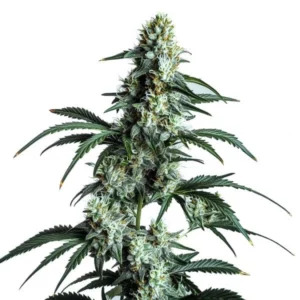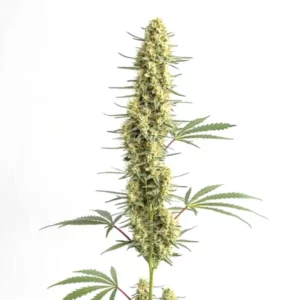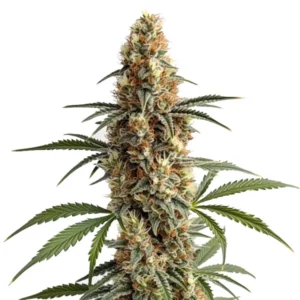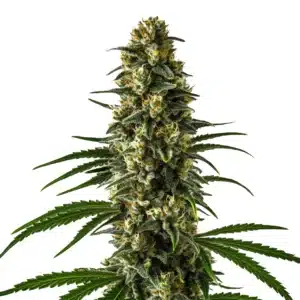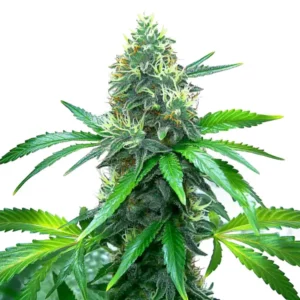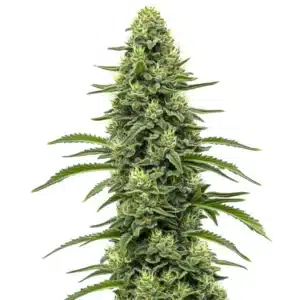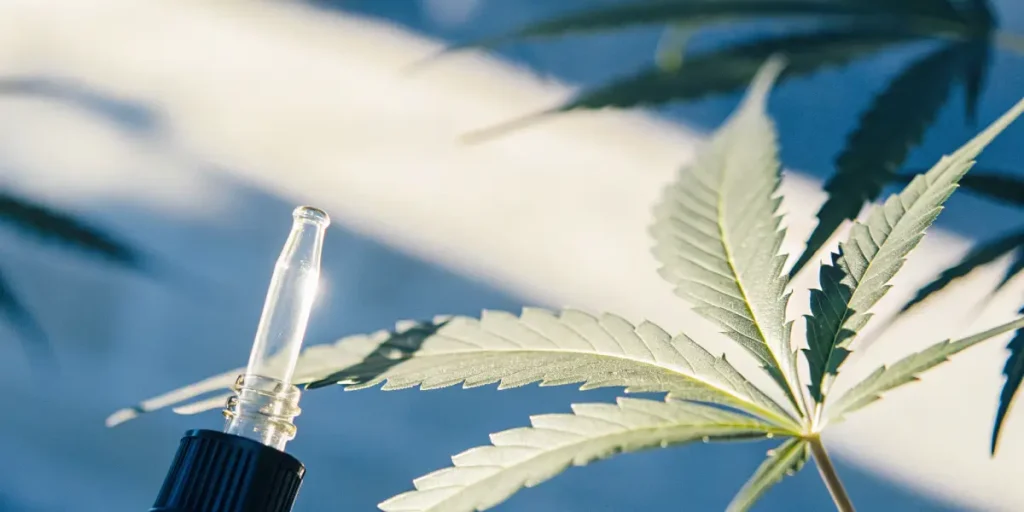
What are Non-Articulated Laticifers in Cannabis?
Non-articulated laticifers in cannabis are specialized cells that play a crucial role in the plant’s survival and efficiency. These cells are scattered throughout the plant and are responsible for producing and storing latex, a milky fluid that contains various compounds. While most people associate latex with rubber trees, in cannabis, it has a different function.
The non-articulated laticifers function in cannabis involves complex interactions within the plant. Unlike articulated laticifers, which are formed by a series of joined cells, non-articulated laticifers are long, single cells that can grow extensively. This anatomy allows them to efficiently transport and store substances crucial for the plant’s growth and defense mechanisms.
Recommended Strains
Blue Dream
|
|
THC | 17% - 24% (Medium) |
|
|
Type | Feminized |
|
|
Yield | High |
|
|
Phenotype | 50% Indica / 50% Sativa |
Sour Diesel
|
|
THC | 22% - 25% (Medium) |
|
|
Type | Feminized |
|
|
Yield | High |
|
|
Phenotype | 30% Indica / 70% Sativa |
In cannabis, the role of non-articulated laticifers is vital for resin production, which contributes to the plant’s potency and aroma. These laticifers are part of the intricate cannabis plant anatomy, working silently to ensure the health and vitality of the plant. Knowing these functions can help both novice and seasoned growers optimize their cultivation practices.
The efficiency of non-articulated laticifers in cannabis plants cannot be understated. These cells are pivotal in maintaining the plant’s structural integrity by transporting essential nutrients and compounds across various parts. Their ability to function as independent units ensures that even distant regions of the plant receive the nutrients necessary for growth and protection. This decentralized system is particularly advantageous in large cannabis plants where efficient nutrient distribution is key.
Moreover, non-articulated laticifers contribute significantly to the plant’s defensive strategies. They help in the rapid transport of defensive compounds, enabling the plant to respond swiftly to threats such as pests or environmental stressors. By knowing the function of non-articulated laticifers in cannabis plants, cultivators can enhance their strategies for pest management and environmental adaptation, ensuring healthier and more resilient crops.
Differences Between Articulated and Non-Articulated Laticifers in Cannabis
When comparing articulated and non-articulated laticifers, it’s essential to understand their structural differences. Articulated laticifers consist of multiple connected cells, forming a network that can sometimes be seen with the naked eye. In contrast, non-articulated laticifers are singular, elongated cells that do not connect with others.
This structural distinction affects how each type of laticifer functions within the cannabis plant. Non-articulated laticifers are more efficient in certain roles, especially regarding the storage and transport of latex. Their ability to grow independently allows them to reach different parts of the plant, providing a decentralized system of nutrient and compound distribution.
The differences between articulated and non-articulated laticifers in cannabis extend beyond structure to their respective roles in plant physiology. Articulated laticifers are often involved in forming more visible structures, whereas non-articulated laticifers operate on a more micro-level, impacting cellular processes. This difference allows non-articulated laticifers to play a unique role in the swift mobilization of resources, essential for rapid plant responses.
Furthermore, the differences between these two types of laticifers influence the approach growers take in cultivation. Non-articulated laticifers, due to their solitary nature, provide flexibility in nutrient distribution strategies, especially in environments where resources are scarce or unevenly distributed. Recognizing these structural and functional differences allows growers to tailor their techniques to maximize plant health and yield.
Non-Articulated Laticifers and Cannabis Resin Production
The production of resin in cannabis largely relies on the efficiency of non-articulated laticifers. Resin contains cannabinoids and terpenes, compounds responsible for the plant’s psychoactive effects and aroma. These compounds are stored in trichomes, which are tiny, hair-like structures on the plant’s surface. Non-articulated laticifers play a pivotal role in supplying the necessary precursors for resin production.
With the increased demand for high-potency cannabis strains, knowing how non-articulated laticifers contribute to resin production can benefit growers. Cultivators can select strains like Chemdawg, known for its robust resin production, to maximize their harvest. This strain, with its rich terpene profile, exemplifies the importance of these laticifers in creating high-quality cannabis products.
The connection between non-articulated laticifers and cannabis resin production is fundamental for breeders aiming at enhancing strain potency. These laticifers ensure a steady flow of precursors to trichomes, where resin is synthesized and stored. By optimizing the conditions that favor non-articulated laticifer function, growers can significantly increase the cannabinoid and terpene content of their plants.
Knowing the function of non-articulated laticifers in cannabis plants highlights the importance of these cells in the overall quality of the final product. As non-articulated laticifers and cannabis resin production are closely linked, any improvement in the function of these cells can lead to superior cannabis with enhanced psychoactive and aromatic properties, satisfying both recreational and medicinal demands.
Promos & Deals
Practical Implications for Growers
For cannabis growers, knowing the function of non-articulated laticifers can lead to significant improvements in cultivation techniques. These laticifers influence various aspects of the plant’s development, from nutrient distribution to defense against pests and diseases.
By selecting strains with efficient laticifer systems, growers can enhance their yield. For instance, Blue Dream is a popular choice due to its balanced growth and resin production. This strain benefits from a well-functioning laticifer system, ensuring a steady supply of nutrients and compounds essential for robust growth.
One of the most significant practical implications for growers is the ability to diagnose and address issues related to nutrient deficiencies by examining the health of non-articulated laticifers. These cells can serve as indicators of overall plant health, alerting growers to potential problems before they become critical. By monitoring the state of these laticifers, growers can implement corrective measures promptly, ensuring consistent plant growth and productivity.
Additionally, knowing the function of non-articulated laticifers in cannabis can aid in selecting the right environmental conditions for optimal growth. By adjusting factors such as soil composition, water availability, and light exposure to support laticifer health, growers can create an ideal environment for maximizing plant yield and quality. This knowledge is especially beneficial for indoor cultivators who have greater control over growing conditions.
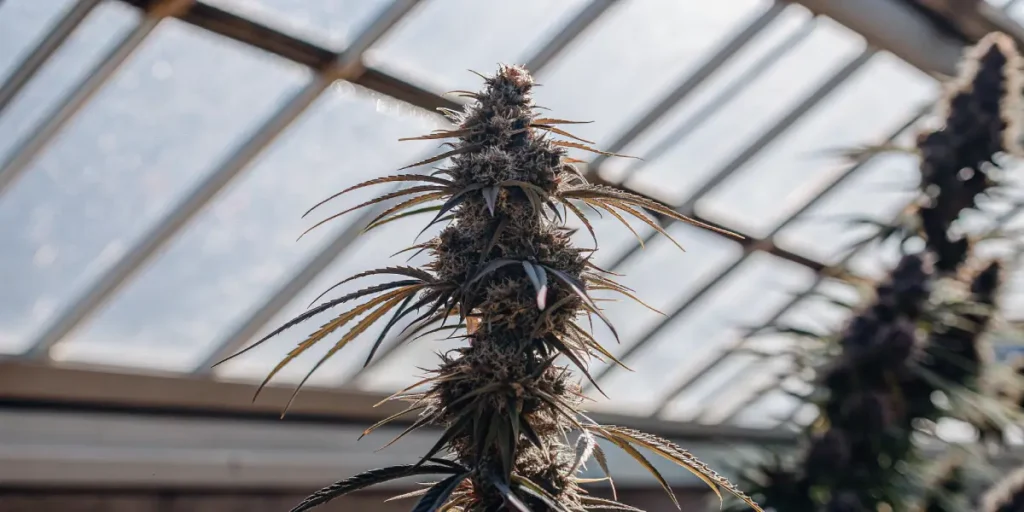
Choosing the Right Cannabis Strains
Selecting the right cannabis strain is crucial for leveraging the benefits of non-articulated laticifers. Strains like Sour Diesel are known for their powerful effects and abundant resin. This is partly due to the efficient functioning of their laticifers, which support the plant’s metabolic processes.
Experienced growers often choose strains with a reputation for high resin production, as these are likely to have well-developed laticifer systems. By focusing on such strains, both novice and seasoned growers can improve the quality and quantity of their harvests.
When choosing the right cannabis strains, knowing what are non-articulated laticifers in cannabis can guide the selection process. Strains with robust non-articulated laticifer systems are better equipped to produce high-quality resin, making them ideal for products requiring strong psychoactive effects. This selection process is integral for commercial growers focused on potency and flavor.
Moreover, the cannabis plant anatomy, including the efficiency of non-articulated laticifers, should be a consideration for breeders developing new strains. By prioritizing traits associated with efficient laticifer function, breeders can create new varieties that offer superior growth characteristics and product quality, meeting the evolving demands of the cannabis market.
FAQs
What are non-articulated laticifers in cannabis, and why are they important?
Non-articulated laticifers in cannabis are specialized cells that produce and store latex, a crucial component for the plant’s growth and defense. These cells operate independently, making them effective in nutrient distribution and resin production. Their ability to function as single, elongated cells allows them to supply essential compounds to various parts of the plant efficiently.
Knowing their importance can help growers optimize their cultivation processes. By focusing on strains with robust laticifer systems, such as Chemdawg or Blue Dream, cultivators can enhance both the quality and yield of their cannabis crops.
The non-articulated laticifers function in cannabis is pivotal for maintaining plant health and resilience. These cells are instrumental in managing internal resources, ensuring that the plant can adapt to changing environmental conditions. By facilitating efficient nutrient transport, they support the plant’s metabolism and growth, making them indispensable for successful cannabis cultivation.
For those wondering what are non-articulated laticifers in cannabis, it’s essential to recognize their role in safeguarding the plant against potential threats. By storing and distributing defensive compounds, these laticifers help the plant fend off pests and diseases, thereby preserving crop quality and yield. This knowing is vital for growers looking to produce robust and resilient cannabis plants.
How do non-articulated laticifers differ from articulated ones?
The main difference lies in their structure. Articulated laticifers consist of connected cells forming a visible network, while non-articulated laticifers are single, elongated cells. This structural variance influences their function within the plant, with non-articulated laticifers being more effective in certain roles like nutrient transport and latex storage.
These differences can impact a grower’s approach to cultivation. For instance, choosing strains known for efficient laticifer systems can enhance resin production, a desirable trait for producing high-potency cannabis.
Besides to structural differences, the functional implications of articulated versus non-articulated laticifers are significant. While articulated laticifers may provide certain structural benefits, non-articulated laticifers are more adept at rapid nutrient transport, making them crucial for quick plant responses. This distinction is vital for growers aiming to optimize nutrient efficiency and plant health.
Furthermore, the differences between articulated and non-articulated laticifers in cannabis highlight the adaptability of plant systems in varied environments. Non-articulated laticifers offer a more flexible nutrient distribution network, which can be particularly advantageous in less predictable growing conditions. This adaptability is a key consideration for growers seeking to enhance resilience and productivity in their crops.
What role do non-articulated laticifers play in resin production?
Non-articulated laticifers are integral to resin production in cannabis. They supply the precursors needed for cannabinoid and terpene synthesis, which are stored in the plant’s trichomes. The efficiency of these laticifers directly affects the potency and aroma of the cannabis.
Growers aiming for high-resin strains like Sour Diesel benefit from knowing how these cells function. By optimizing conditions for laticifer efficiency, such as nutrient supply and environmental factors, cultivators can enhance the resin output of their crops.
The non-articulated laticifers and cannabis resin production are intricately linked, as these cells ensure a reliable flow of essential compounds to trichomes. This flow is crucial for the synthesis of high-quality resin, which defines the therapeutic and recreational properties of the cannabis plant. By focusing on improving laticifer function, growers can produce cannabis with enhanced potency and market appeal.
Knowing the function of non-articulated laticifers in cannabis plants provides insights into how these cells support overall plant health and secondary metabolite production. By managing factors that affect laticifer efficiency, growers can optimize cannabinoid and terpene profiles, resulting in superior cannabis products that meet consumer demands for potency and aroma.
Can knowing non-articulated laticifers improve cannabis cultivation?
Yes, a solid grasp of non-articulated laticifers can significantly improve cultivation outcomes. These laticifers impact everything from nutrient distribution to pest resistance, playing a crucial role in the plant’s overall health and productivity.
By selecting strains with efficient laticifer systems and managing their growing environment effectively, growers can increase both yield and quality. Knowledge of these cells helps in diagnosing and addressing common cultivation challenges, leading to more successful harvests.
The insight into what are non-articulated laticifers in cannabis can lead to more informed decisions in cultivation practices. By knowing how these cells contribute to nutrient distribution and plant defense, growers can develop strategies that enhance plant vigor and resilience. This knowledge is particularly beneficial in reducing losses due to environmental stress or pest infestations.
Additionally, knowing the function of non-articulated laticifers in cannabis plants aids in breeding and selection processes. By focusing on traits associated with efficient laticifer function, breeders can develop new strains optimized for specific growing conditions or desired product qualities. This targeted approach can lead to innovative cannabis varieties that offer enhanced yield and quality.
What strains are recommended for maximizing the benefits of non-articulated laticifers?
Strains such as Chemdawg, Blue Dream, and Sour Diesel are excellent choices for leveraging the advantages of non-articulated laticifers. These strains are noted for their robust resin production and overall plant health, attributed to efficient laticifer systems.
By focusing on these strains, growers can benefit from enhanced potency, aroma, and yield. Knowing the laticifer function in these plants aids in refining cultivation techniques, ensuring optimal growth and harvest outcomes.
Choosing strains with a well-developed system of non-articulated laticifers ensures that growers can harness the full potential of these cells in terms of resin production and plant health. Strains like Chemdawg and Blue Dream not only offer high resin content but also exhibit resilience against common cultivation challenges, making them ideal for both novice and experienced growers.
Furthermore, by selecting strains that highlight the role of non-articulated laticifers in cannabis plants, growers can achieve a more consistent and high-quality harvest. These strains, famed for their potency and aromatic profiles, benefit from the efficient nutrient and compound distribution facilitated by non-articulated laticifers, leading to superior end products that meet consumer expectations.



